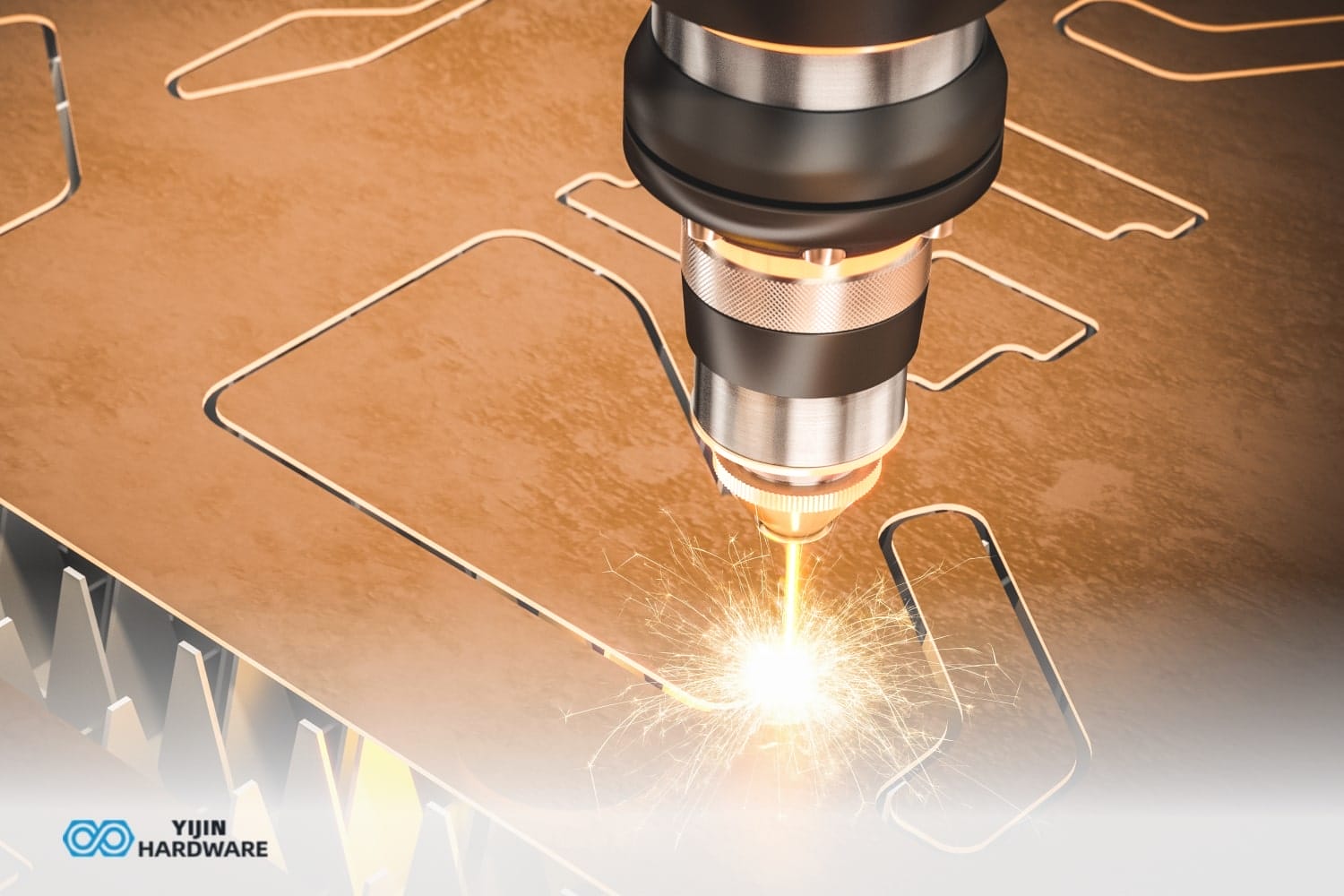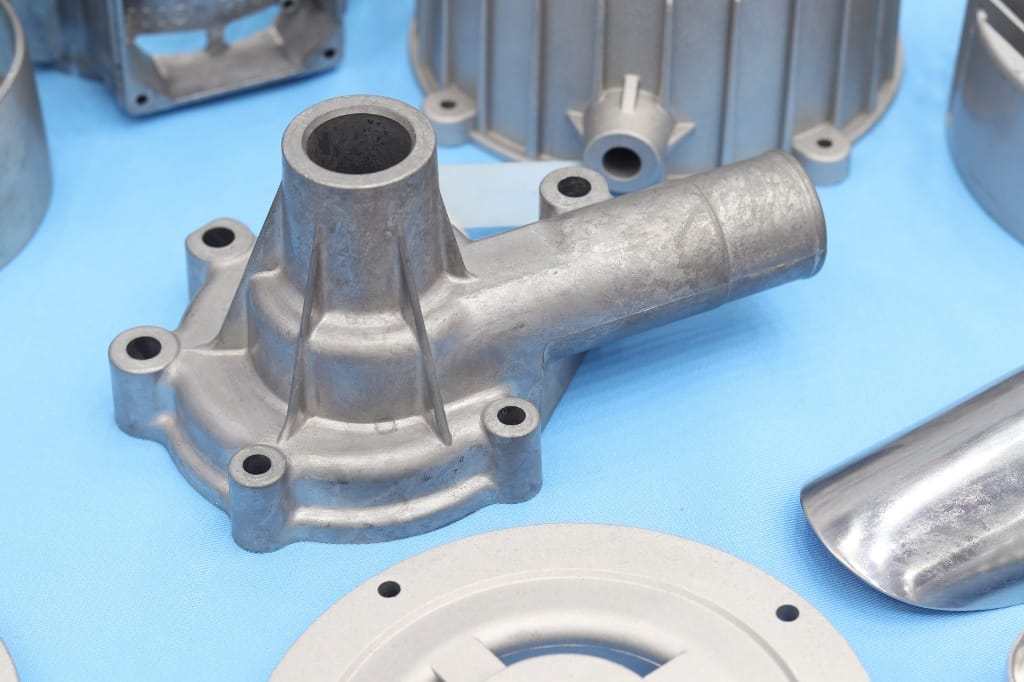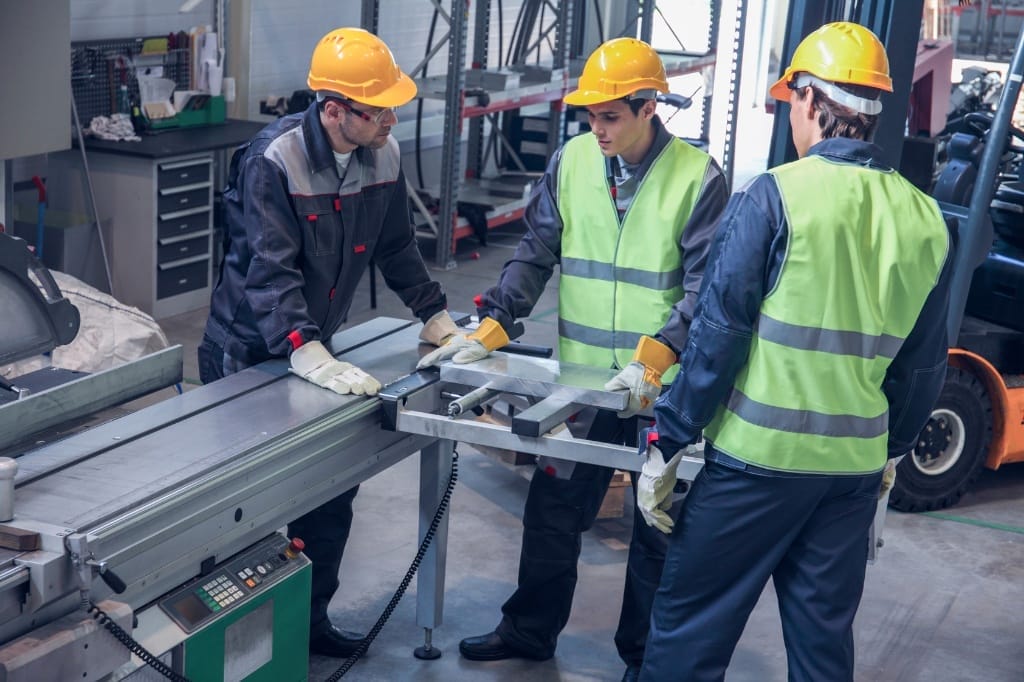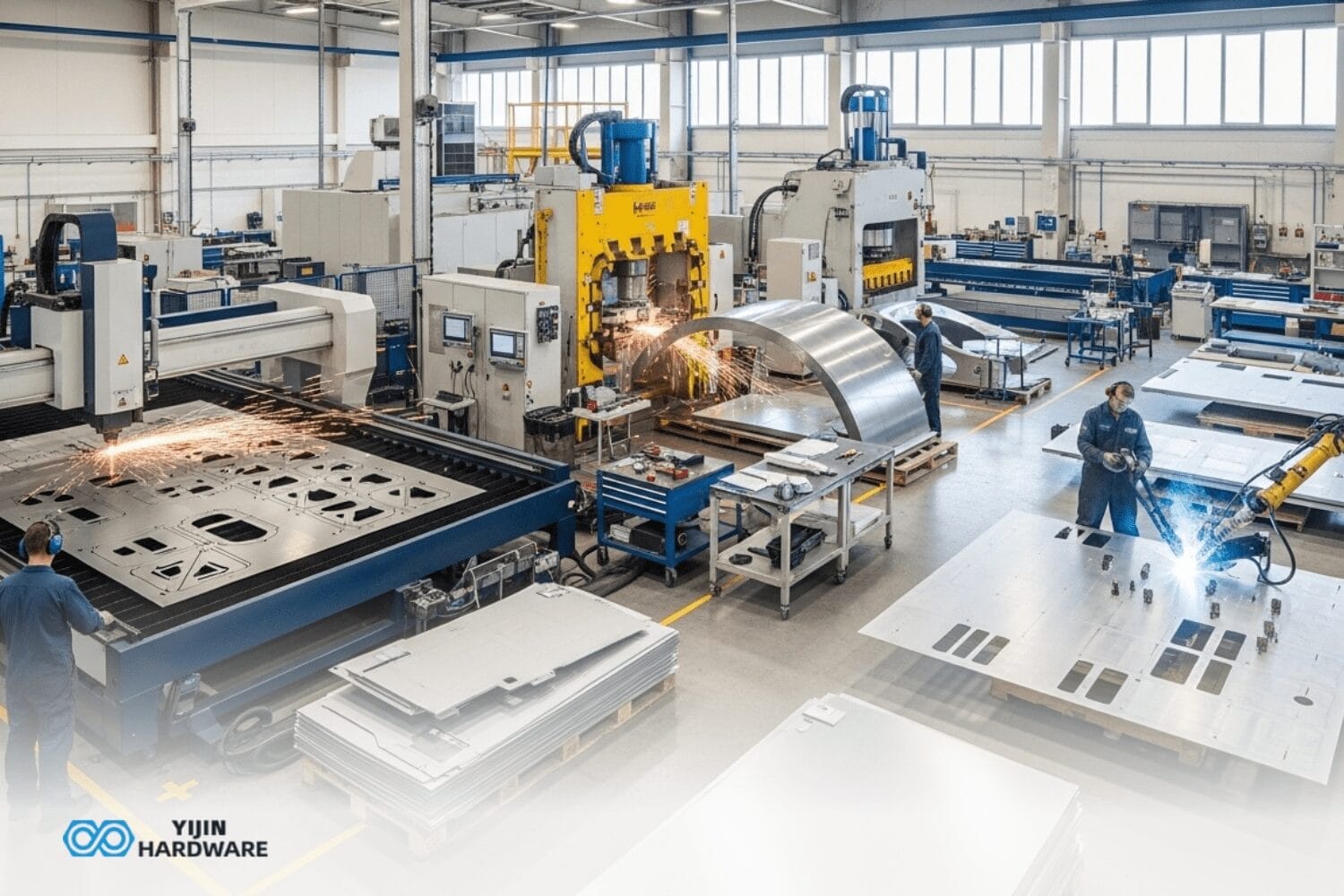Laser cutting has significantly changed the manufacturing industry, especially when it comes to processing metals like copper. This innovative technology uses a highly focused laser beam to cut or engrave materials with incredible accuracy and efficiency.
Copper is well-known for its excellent electrical conductivity and thermal properties, but it has challenges due to its high reflectivity. If you’re searching for a laser cutting service online, selecting a specialized provider can make a significant difference in ensuring precision and efficiency for copper cutting.
Our team at Yijin Hardware are experts when it comes to laser cutting machines and CNC manufacturing. Let’s review all the details regarding copper laser cutting, the processes involved, the types of laser cutting machine models used, and more.
Key Takeaways
- Using a laser machine is an efficient cutting method for copper.
- Fiber lasers are more effective for cutting copper than CO2 lasers.
- Copper is highly reflective and conductive, which complicates the cutting process.
- You need to adjust laser power, cutting speed, and focus to successfully laser-cut copper.
- Copper laser cutting is widely used in electronics, automotive, and medical fields.
What is Copper Laser Cutting?
Copper laser cutting is the process of using a specialized laser machine to precisely cut through copper sheets or components. This efficient technique allows for the creation of intricate designs and detailed parts with high accuracy.
The laser-cutting process starts with a computer-controlled laser head that directs a focused laser beam onto the copper workpiece. The energy from the laser heats the copper to its melting point. This makes it easy to laser cut copper sheet material cleanly and quickly.
How effective your copper laser cutting is depends on your choice of laser, though. For example, fiber lasers shine light at a wavelength of around 1.06 micrometers. In fact, fiber laser cutting machines are highly effective for cutting copper because the material absorbs them better.
On the other hand, traditional CO2 lasers produce light at longer wavelengths (around 10.6 micrometers) which copper tends to reflect. This makes CO2 laser cutters less efficient at times.
Copper Laser Engraving

The copper laser engraving process uses a high-powered laser beam of light to create shallow cuts or markings on the surface of the copper. This is usually done for decorative purposes, branding, or adding subtle designs to copper components.
However, cutting and engraving are different procedures. Laser cutting penetrates the sheet material, but engraving only affects the surface. This means you can create detailed patterns without ruining the integrity of the copper sheet metal part.
The engraving process and laser cutting use similar technology, though. Small adjustments are made to the power and speed settings of fiber laser cutters to ensure that the beam only removes a thin layer of material. This process can be used to cut a variety of copper, such as decorative items, signage, and custom laser-cut components.
Types of Laser Cutting for Copper
There are two main types of laser system models used to laser-cut copper: fiber lasers and CO2 lasers. Let’s break them down!
Fiber Lasers
Fiber lasers can laser cut copper parts with high accuracy and efficiency while having very minimal reflectivity issues. These lasers take a high percentage of electrical energy and turn it into laser energy, so they are a more affordable option for high-volume production. You would generally use fiber lasers for industrial applications, where speed and accuracy are the priority.
CO2 Lasers
CO2 lasers are commonly used for cutting any material’s parts up, but they are not as effective for copper. This is because copper is a highly reflective metal, so CO2 lasers would need special coatings applied to the copper surface to improve energy absorption. CO2 lasers are more suitable for your average DIY, hobby, or small-scale applications where the thickness of the copper material is minimal.
Copper Laser Cutting Challenges
Many materials, including copper, can present distinct challenges during laser cutting. Here are a few of the difficulties you might face when you cut using a laser instead of traditional cutting methods.
- High Reflectivity: Copper tends to reflect laser energy, especially toward infrared wavelengths. This can lead to inefficient cutting and potential damage to the laser equipment. You have to be very careful when you choose your laser type and settings so you can minimize reflection.
- Thermal Conductivity: Copper has great thermal conductivity, but that means that heat dissipates quickly. This makes it difficult to maintain the necessary temperature for effective cutting for a range of applications. Higher laser power and slower cutting speeds are usually needed to compensate for this.
- Material Thickness: The thickness of the copper sheet can greatly impact the cutting process. Thicker materials mean you need more powerful lasers and adjusted cutting speeds to get clean cuts.
- Copper Oxide: When cutting copper, oxidation can occur, leading to rough edges, decreased cut quality, or corrosion. If you use auxiliary gases like nitrogen or oxygen, you can help lower the risk of this happening. Use nitrogen to reduce oxidation and oxygen to cut thicker materials.
Best Practices for Laser Cutting Copper Materials

To get the highest-quality results when you laser cut parts of copper, you need to keep a few things in mind, from the accuracy of the laser to its speed. To get the best possible outcome, follow these best practices:
- Laser Power Settings: Adjust the laser power according to the thickness of the copper sheet. For example, a power setting of 1,000 W is suitable for 1 to 1.5mm thick sheets, while thicker sheets might need up to 4,000 W. Notably, the optimal power setting depends on factors like laser type, cutting speed, and the use of auxiliary gases.
- Cutting Speed: Keep a cutting speed of around 85 to 90% of the maximum allowed speed used for laser cutting. You might need slower speeds for thicker materials to improve accuracy, as copper can also be evasive in this sense.
- Focus Adjustment: Make sure that the laser’s focal point is correctly positioned on the surface of the copper workpiece. This boosts energy density and improves cutting efficiency.
- Auxiliary Gas: Use high-pressure oxygen or nitrogen to improve the cut quality and reduce oxidation. Oxygen can chemically react with copper to form copper oxide, which lowers reflectivity and improves your cutting performance. Depending on the intended results, you should carefully consider how much oxygen to use, as it might enhance oxidation and could produce rough edges.
- Surface Preparation: Clean the copper sheets before cutting to remove any contaminants that could get in the way of the laser cutting process.
Yijin Hardware: Efficient CNC Manufacturing Services
Yijin Hardware is an industry leader when it comes to providing efficient CNC manufacturing services, including copper laser cutting. With our advanced laser-cutting technology and dedication to absolute accuracy, we get you high-quality results in record time.
Whether you need industrial parts for large operations or delicate parts for small projects, we’re ready to help with precision cutting and affordable solutions. Contact us for a quote!
Cutting Copper on Laser FAQs
Which material should never be cut by laser?
Never cut materials such as epoxy, polypropylene, PVC, coated carbon fiber, fiberglass, or glued materials with lasers. Cutting some of these materials with layers may produce dangerous gases or even completely ruin the material you’re trying to cut.
Which is better for engraving: CO2 or diode laser?
CO2 lasers are better for engraving because they have a higher power output. This makes them more effective at cutting thick materials. Diodes are a lot less powerful, so this process will be more time-consuming.
Can you etch copper with a CO2 laser?
Yes, you can etch copper with a CO2 laser. However, if you’re engraving using a CO2 laser, you need to prepare the copper workpieces first. This means you must coat the workpieces with a metal marking spray or paste to remove any reflection issues. Without this coating, the CO2 laser will struggle to engrave or cut the copper effectively due to its high reflectivity. This preparation will also help the copper absorb the energy from the laser.
Back to Top: Cutting Copper on Lasers









